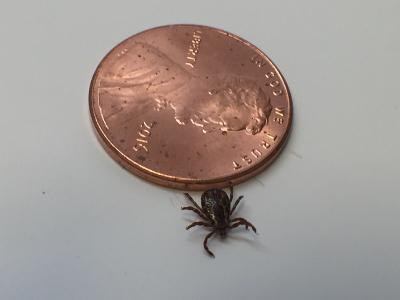NIAID Team Explores Metabolism in Determining Infection Severity
Some pathogens can cause infectious disease by following several different paths into a host, and disease severity can vary depending on the infection route used. This raises research questions about how the route that a pathogen uses influences infection. Francisella tularensis, the bacterium that causes the disease tularemia – also called rabbit fever – can infect a person in many ways:
• In the lungs by breathing
• In the skin from a bite or handling infected animals
• In the eye by airborne exposure
• In the gut by consuming contaminated food or water
Consistently, the most severe tularemia cases involve lung infections, sometimes leading to death. Fortunately, antibiotics are available to treat tularemia – though early treatment can be challenging because the disease is difficult to diagnose. There are about 200 cases of tularemia reported in people each year in the United States.
Curious to understand why cases of tularemia in the lung – in contrast to those that start in the skin – can be so severe, NIAID scientists compared mice infected with the same F. tularensis dose in the nasal passage (to establish disease in the lung) to mice infected in the skin. They then compared tissue in diseased areas for immune and metabolic responses to find out if the mice were fighting the infection, how, and whether tweaking the responses can influence the outcome.
Their findings, published in the science journal PLOS One, show that the bacterium is “exquisitely adept” at manipulation, delaying the immune response in the lungs to create an environment for greater infection and replication. For mice infected in the skin, symptoms – such as swollen glands – appeared faster, thus triggering timely immune protection.
The research team, at NIAID’s Rocky Mountain Laboratories in Hamilton, Montana, thinks the findings could extend beyond F. tularensis to other pathogens. For example, Yersinia pestis, the bacterium that causes plague, also is transmitted by numerous routes that manifest most severely in the lungs.
“Our hypothesis is that the programmed anti-inflammatory and pro-resolving nature of the lung is exploited by pathogens, resulting in more severe and lethal disease,” study senior investigator Catharine Bosio, Ph.D., explained. “The metabolic environment in the skin is prone to mounting a faster inflammatory response, resulting in better control early in infection.”
By understanding the metabolic role in infection, researchers can better understand and predict which therapeutic approaches could be successful. For example, in the study the team hypothesized that manipulating the lung to be more inflammatory would help control F. tularensis early on.
“However, it had the opposite effect,” Dr. Bosio said. “Now we know that promoting that type of metabolic response may not be a good intervention and may actually harm the host.”
In future studies the group plans to identify how different components of pathogens like F. tularensis affect host metabolic responses and response to infection.
Reference:
F Jessop et al. Route of Francisella tularensis infection informs spatiotemporal metabolic reprogramming and inflammation in mice. PLOS One. DOI: 10.1371/journal.pone.0293450.


